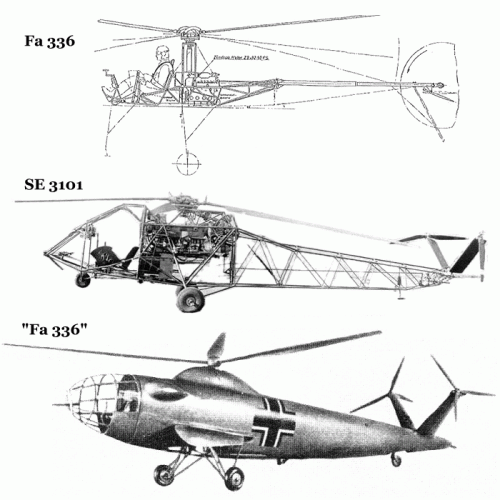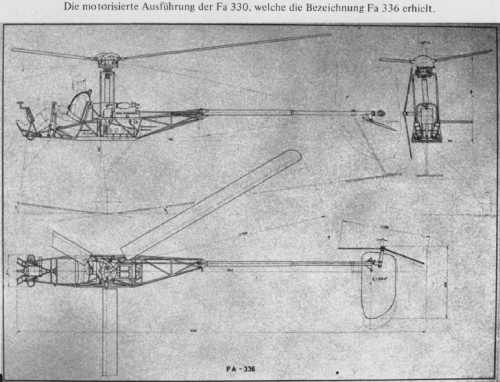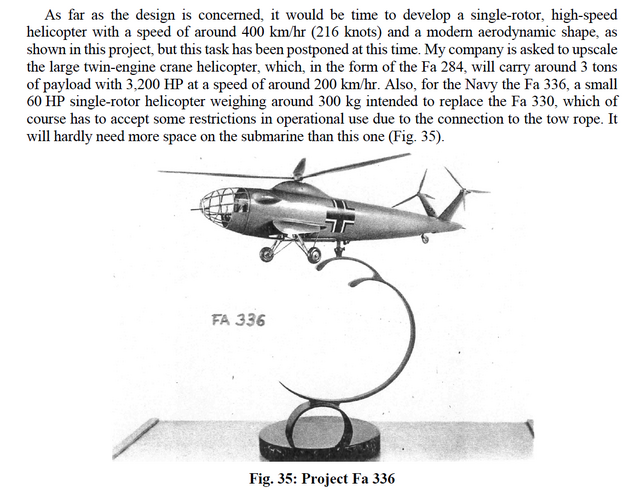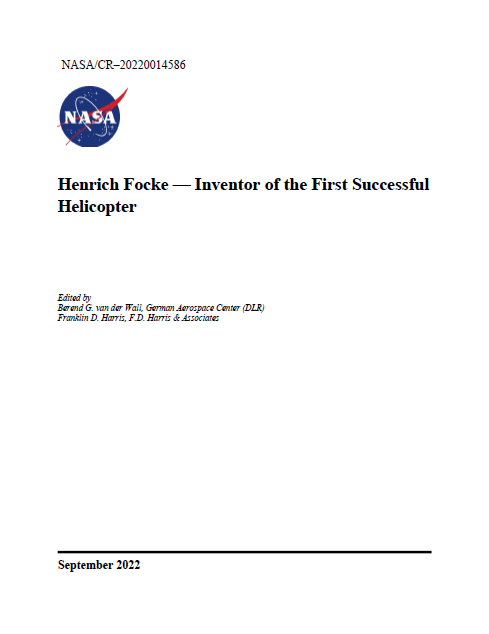As a remedy for the tactical shortcomings evidenced in testing the Fa 330, a light helicopter designated Fa 336 was developed. Due to its being motorized, a greater independence from the location of the submarine was to be ensured. In a second stage of the 300-pound Fa 336's design evolution, plans were made for the development of a lightweight anti-submarine helicopter with a 44 kW (60 hp) engine driving the main, as well as the smaller tail rotor simultaneously. Documents captured by the Allies later showed that, instead of the conventional balance of torque, and despite only a brief combustion period, a small liquid rocket engine with 145 kp performance should maintain stability in flight. As opposed to the Fa 330, a reinforced fuselage and a fairing were meant for a future production version, increasing the take-off weight to 300 kg. Eventually a land-based and a sea-based version of that machine would emerge.
What was especially expected of the Fa 336 was the efficient close support of maritime operations, and so a preproduction batch of ten machines was ordered in April 1943 by the OKM in order to begin testing as soon as possible. Construction of the required ten prototype aircraft called for in June was supposed to be in full swing in the late summer of 1943, but the program development dragged on despite the urgency. After a period of adjustment from May 1944 to early 1945 there was a further, unforeseeable delay. Asd a result, only a sample unit under was in construction when the war ended.

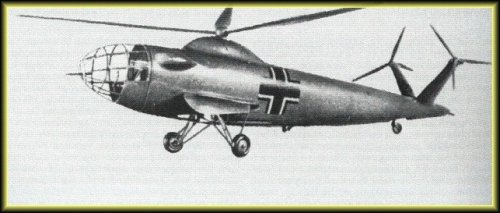
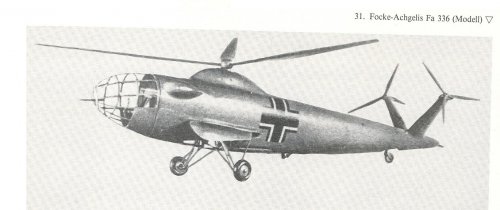
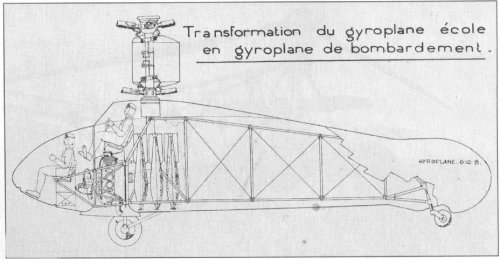
![Digitalizar0001[1].gif](/data/attachments/23/23653-dcab8b347bd0385da0fd036f3dce51cb.jpg)
